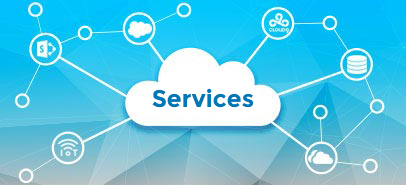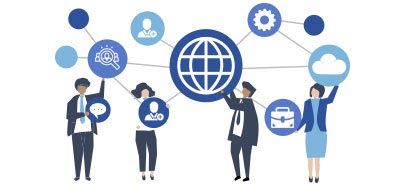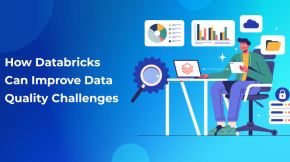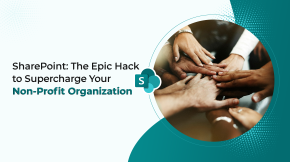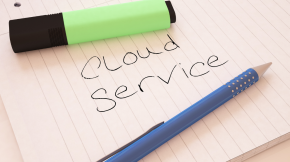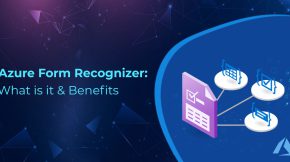What is Microsoft Purview? Your 2025 Guide
Microsoft Purview is your one-stop solution for data governance, compliance, information protection, and risk management. You get a single view to manage data across your organization: on-premises, cloud, files, emails, and more. With Purview, you can discover, classify, protect, and govern sensitive information, while staying on top of tough regulatory requirements.
Why Most Companies Struggle With Data Governance
You probably have more data than you can track, scattered across SharePoint, email, OneDrive, Azure, and maybe even Google Docs. Important stuff, like health info or customer lists, hides everywhere. This data sprawl makes it tough to answer, “Where is our sensitive data? Who can see it? Are we ready for an audit?”
Manual audits and spreadsheets feel like shouting into the wind. They miss hidden risks. They don’t help you automate policies, classify data, or keep up with new privacy laws. You need a tool that works across your whole environment, not another shiny dashboard.
What is Microsoft Purview?
Microsoft Purview is a real unified data governance and compliance platform. It’s your single control center for all data: on-premises databases, cloud services, files, emails, and apps. In 2021, Microsoft merged Office 365 and Azure data governance into Purview. Now, you get mapping, automated data classification, sensitivity labelling, and policy enforcement in one place.
With Microsoft Purview, you can:
- Find and classify sensitive information automatically.
- Set retention policies and automate them.
- Enforce Data Loss Prevention policies across your landscape.
- Manage regulatory compliance and audit trails without the pain.
- Track where data flows and map data lineage.
- Control access with role-based access controls.
- See insider risks and user activity.
Microsoft Purview Features and Components
Data Discovery and Classification Purview scans all your data—structured, unstructured, on-premises, and cloud. You get a living Data Catalog. Automated data classification rules flag personal, financial, and health information. You finally see where your sensitive data lives.
Sensitivity Labeling and Information Protection You label documents, emails, and records as Confidential or Public. Labels encrypt, watermark, or restrict access and follow your content across SharePoint, Teams, OneDrive, and Exchange. You automate labeling or make users pick a label before sharing.
Data Loss Prevention (DLP) DLP policies spot sensitive info patterns—credit cards, SSNs, and more. These policies block or warn users before they share data. DLP is how you make sure your business meets privacy rules like GDPR or HIPAA.
Records Management and Data Lifecycle Management Automate retention and deletion. Delete emails after 7 years, keep files for litigation, whatever your policies require. Manage all data lifecycle policies from one dashboard, not ten.
eDiscovery and Legal Hold
Your legal and compliance teams can search emails, docs, and chats for investigations. Place data on legal hold to protect it from deletion. No more chasing files across different systems.
Audit Logging and Insider Risk Management
The thing about Purview is that it tracks file access, sharing, and configuration changes. Insider Risk Management uses analytics to catch risky behavior, like someone suddenly downloading lots of sensitive files. You spot trouble before it turns into a headline.
Unified Policy Enforcement Write a policy once and it applies everywhere. For example, block non-full-time employees from confidential data across databases, SharePoint, and beyond.
Microsoft Purview for Data Security and Protection
You want to protect sensitive data from leaks and breaches. Purview makes this straightforward. Automated classification, DLP, and audit logs work together. Users get clear warnings about risky behavior. Purview helps you spot insider threats and gives you real-time dashboards to see where policies need more coverage.
Microsoft Purview for Compliance and Audit Readiness
You know compliance isn’t an option. Laws like GDPR, HIPAA, and ISO 27001 expect you to control and document access to sensitive data. Purview makes compliance daily, not a mad scramble. You get policy templates, assessment tools, and detailed audit logs showing who accessed or deleted what. Collect evidence for audits fast. Consistent policies help you close gaps and avoid fines.
Microsoft Purview Data Catalog and Metadata Management
With Purview’s Unified Catalog, you organize, search, and understand all your data assets. It builds a Data Map of your estate, structured and unstructured, on-prem or cloud. Attach metadata, such as data owners, sensitivity, and business context. This makes finding, trusting, and using data easy.
Microsoft Purview Data Classification and Automated Rules
Purview uses built-in and custom classification rules to scan and tag data. AI and ML automate the grunt work, so you don’t have to. You classify data by type, sensitivity, or compliance needs. Once labeled, protection follows the data wherever it goes.
Microsoft Purview Integration with Azure and Microsoft 365
Purview connects with Azure Storage, Azure Data Lake Storage Gen2, Azure Synapse, SQL Server, Blob Storage, and the full Microsoft 365 stack. You can even scan AWS and Google Cloud data. Sensitivity labels and DLP policies flow into Power BI, Microsoft Fabric, and even REST APIs.
Microsoft Purview in Real Life: Government, Banking, Healthcare
Government: Virginia’s Office of Data Governance and Analytics uses Purview to scan and catalog data across agencies. This breaks down silos, helps leaders make better decisions, and supports FOIA and transparency requests.
Banking: Banks face complex rules. Microsoft Purview helps banks centralize control over sensitive data, automate retention and legal holds, and replace multiple tools with one dashboard. This saves money and improves audit readiness.
Healthcare: With 133 million healthcare records breached in 2023, Purview’s fine-grained labeling and lifecycle management matter. CISOs use Purview to protect PHI, enforce HIPAA, and track staff access. Automation helps catch snooping and improper sharing.
Microsoft Purview for Data Lifecycle Management and Records Management
Retention policies and records management are no longer a pain. Set rules to delete data after a fixed period or keep records for legal holds. This reduces risk and helps you stay on the right side of the law. You manage all lifecycle policies from one spot.
Microsoft Purview and AI, Copilot, and Oversharing Risks
AI and Microsoft Copilot change how you use data. Purview protects files and emails with labels and DLP, but AI can still infer sensitive info if users have access. Labels and access controls do not always stop Copilot from surfacing confidential data. Pair Purview with context-aware tools for real-time oversight.
Microsoft Purview Architecture and Cloud Adoption
Purview runs in the Azure cloud. It supports hybrid and multi-cloud, including on-prem sources. Managed private endpoints and Azure portal integration keep things secure. The architecture scales with your needs, making cloud adoption easier.
Best Practices for Implementing Microsoft Purview
- Start with a clear data governance plan.
- Align policies with business goals.
- Use automation for discovery and classification.
- Assign data owners and curators for each asset.
- Bring legal, compliance, HR, and business into the project early.
- Review audit logs and Data Estate Insights often.
- Integrate Purview with your migration and cloud projects.
- Train users on labeling and data handling.
Microsoft Purview Pricing and Licensing
Purview uses pay-as-you-go pricing. Costs depend on the number of sources and how much data you scan. Advanced features, like eDiscovery and full DLP, need E3 or E5 licenses. Always estimate your usage before rollout.
Reviews and User Experiences
Roughly 70% of Fortune 500 firms use Microsoft Purview. Leaders in government, finance, and healthcare report 50% to 75% less audit prep time. Smaller teams sometimes mention a learning curve, but say the payoff is trust and confidence in their data.
Microsoft Purview and Data Governance Culture
Purview helps build a culture of accountability. Assigning data owners and using business glossaries helps everyone know their role. Central policies and labels make employees more aware of data handling. Over time, this builds company-wide compliance and data ethics.
Limitations and Considerations
Purview works best in Microsoft environments. Integrating third-party systems can take more effort. It won’t replace good data governance or architecture. It enforces the rules you set. It doesn’t write them for you.
Alternatives to Microsoft Purview
If you need multi-cloud or non-Microsoft support, look at Collibra, Alation, or Informatica. Apache Atlas is an open-source catalog option. Your choice should fit your tech stack and compliance needs.
FAQs About Microsoft Purview
What is Microsoft Purview?
Microsoft Purview is a unified data governance, compliance, and risk platform. It helps you discover, classify, protect, and manage data everywhere. You get a complete overview, automated policies, and audit readiness.
Is Microsoft Purview a DLP?
Yes, Purview includes Data Loss Prevention policies. You set rules to detect and block sensitive data from being shared.
Who uses Microsoft Purview?
Organizations of all sizes use Purview. It’s essential for finance, healthcare, government, and anyone needing unified data governance.
Is Purview SaaS or PaaS?
Purview is a cloud-based SaaS platform. It runs in Azure and connects to on-prem and cloud sources.
What are the benefits of Microsoft Purview?
You get clarity, control, audit-readiness, and trust. Consistent policies help you reduce risk and make better decisions.
Is Microsoft Purview free?
No. Pricing is pay-as-you-go. Some features require extra licenses.
What are the features of Purview?
Key features include data discovery, classification, labeling, DLP, retention, audit logs, risk management, and a unified data catalog.
What are the types of classification in Microsoft Purview?
Purview uses built-in and custom automated data classification rules. You can classify by sensitivity, type, or compliance needs.
Does Microsoft Purview use AI?
Yes. Purview uses AI and ML to automate discovery and classification, saving time and improving accuracy.
Is Azure Purview and Microsoft Purview the same?
Microsoft Purview replaced Azure Purview. It now combines Azure and Microsoft 365 governance in one platform.
Can Microsoft Purview scan on-prem data?
Yes. Purview scans both on-prem and cloud sources for unified data governance.


